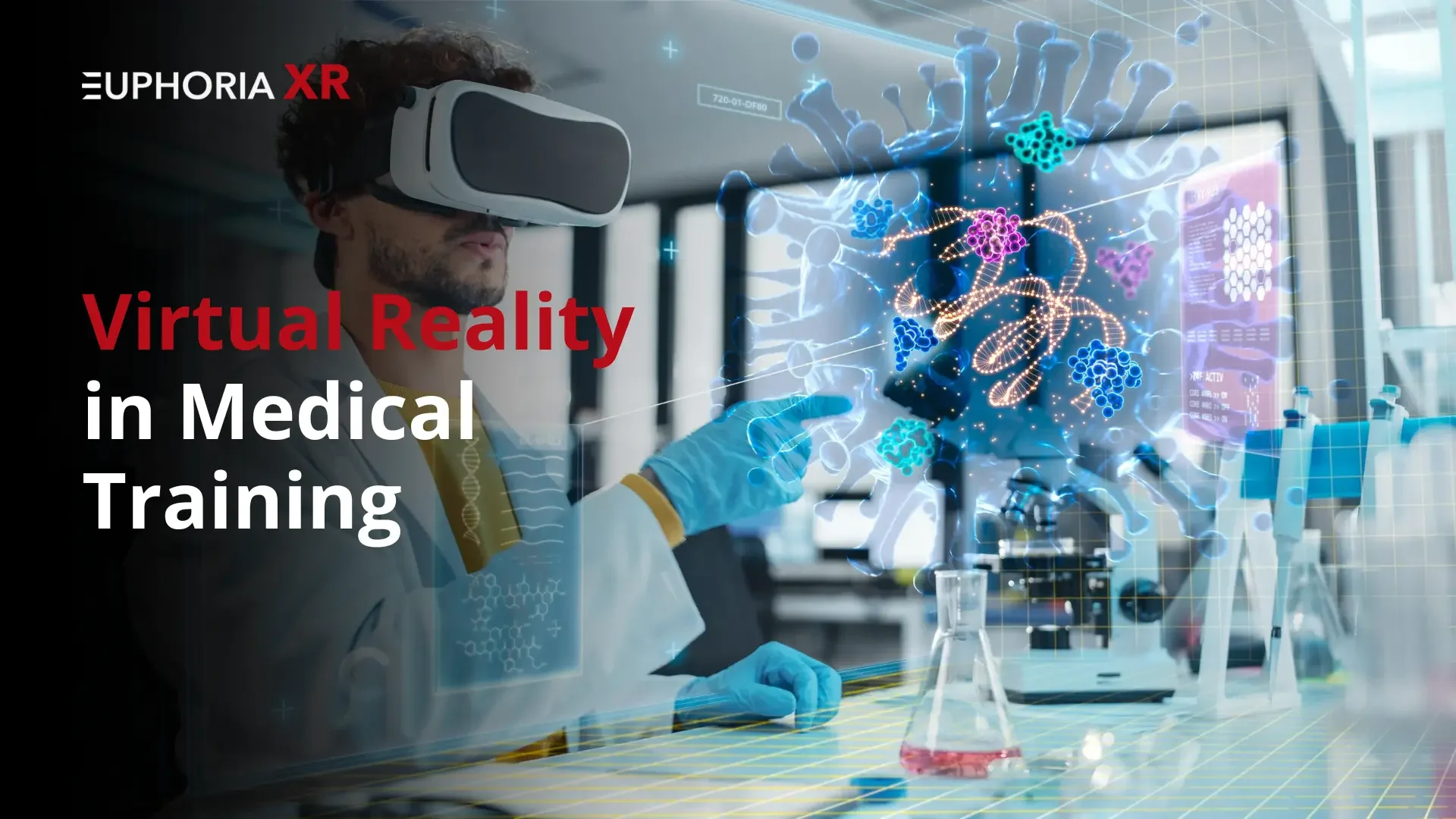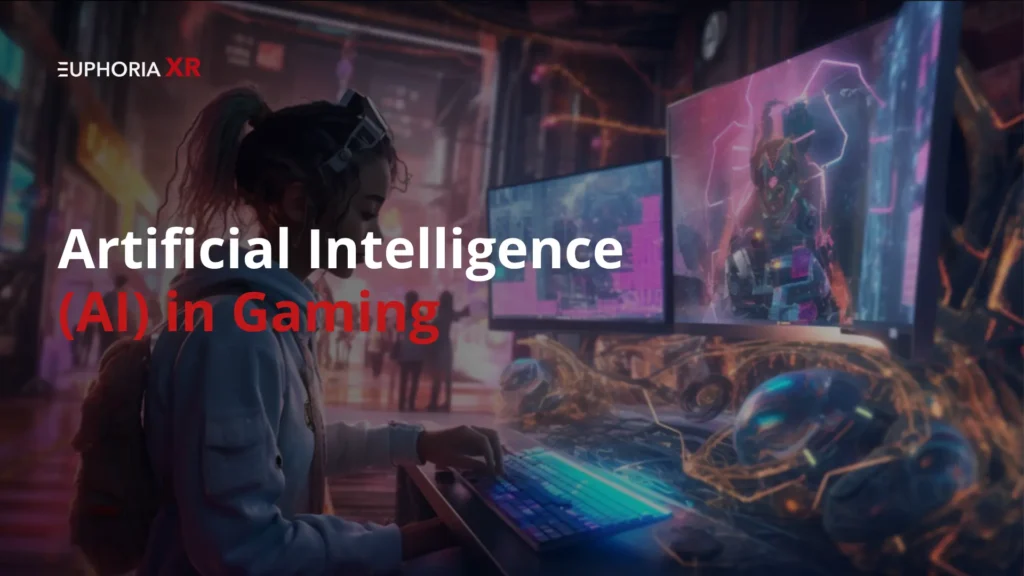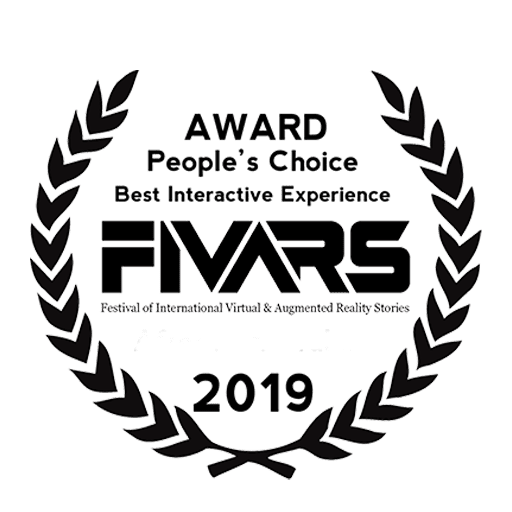“Virtual Reality Bridges the Gap from Classroom to Operating Room.”
Imagine a world where medical students can do as many surgeries as they choose without endangering anyone’s life. Virtual reality medical training holds that promise. VR is the best tool for preparing professionals for the intricacies of recent medicine, whether they are studying anatomy or receiving emergency response training.
Recent studies highlight how virtual reality applications are revolutionizing the medical industry, particularly in surgical training. According to a prominent study, including virtual reality VR in Healthcare like laparoscopic surgery curriculum enhanced learning results in 74% of the cases studied. More convincingly, 87% of the analyzed research showed that practitioners who received training through virtual reality platforms were more accurate in their operations. The future of healthcare is virtual, so let us help you create the ideal VR training program.
What is VR Medical Training?
Imagine entering an operating room without ever leaving your house or school. That is how effective virtual reality is in medical training! Medical practitioners can study, practice, and master their abilities in a risk-free environment thanks to virtual reality. VR enables students to engage with 3D models, mimic real-life situations, and have unparalleled hands-on experience in everything from fundamental anatomy classes to complex surgical operations.
One innovative way to improve the skill set of healthcare professionals is through Virtual Reality Medical Training. Through the use of this technology, people are able to interact with a range of scenarios in virtual settings. Users can view digital human anatomy from a variety of angles and sizes- thanks to these immersive experiences, which make learning more dynamic and engaging. While working physicians have the opportunity to refine their abilities with precision, medical students and interns benefit from a more involved educational experience.
The ability of Virtual Reality Technology to produce simulated settings that provide an immersive experience unmatched by conventional techniques is at the core of virtual reality training. To provide a convincing sense of realism, this simulation is presented via a headset that has VR glasses and headphones. Hand controllers are frequently used to mimic movements in Virtual Reality Software. Consequently, users can face and handle scenarios that would otherwise be unattainable due to real-world limitations, such as intricate surgical operations or urgent medical reactions.
Market Overview of VR for Medical Education
Virtual reality medical training simulations are becoming increasingly popular. Virtual reality technology has changed the game as the global healthcare sector embraces digital transformation more and more. The market for virtual reality healthcare is expected to reach over $40 billion by 2028, according to analysts, because of its ability to improve patient outcomes and medical education.
This increase is not just about technology; it is also about saving lives by making sure that medical professionals are more equipped to handle obstacles in the real world.
How is Virtual Reality Changing Medical Training?
By tackling traditional issues including restricted access to cadavers, live surgeries, and hands-on training, virtual reality is transforming medical education. Here’s how:
Risk-free learning: It improves learning outcomes by allowing trainees to make mistakes without facing outcomes.
Realistic Simulations: Virtual reality offers realistic settings that replicate the intricacies of actual medical situations.
Global Accessibility: Standardized training materials are available to professionals and students everywhere.
Enhanced Engagement: Students remain motivated and involved due to VR’s interactive features.
Use Cases of Virtual Reality in Medical Training
Are you curious about the real-world uses? Here are a few applications for virtual reality:
Surgical training: It involves practicing complex procedures without endangering the lives of patients.
Emergency Response: Modeling high-stress scenarios, such as trauma cases or cardiac arrests.
Patient Interaction: Teaching medical professionals how to interact with patients effectively.
Anatomy Studies: Investigating 3D anatomical models to gain a better understanding of the structures of the human body.
Ready to Start VR Consultancy & Development Services?
Architecture of VR Medical Education Software
Any VR medical training program’s architecture serves as its foundation:
The three main components of Virtual Reality Medical Education software are a client VR application, a web administration panel that allows database management and scenario authoring, and a database web server that stores 3D models and scenarios.
VR Visualization Module
The entire VR world is created via the VR visualization module. The law of physics is applied to all 3D models used in the VR scene by its physics simulator, which is made possible by NVIDIA Flex. Virtual autonomous characters that act as tutors, assistants, and patients are controlled by AI submodules.
Scenario Editing Module
The scenario editing module makes it possible to modify the scenario sequences that are kept in the appropriate database.
Scenario Simulation System
Users can engage with the scenario and its contents through a scenario simulation system.
Quiz and Test Data
An optional set of exercises designed to confirm a medical student’s understanding is included in the quiz and test data. It may call for both real actions and spoken responses.
Learning Analytics Module
The learning analytics module evaluates a medical student’s performance based on predetermined standards. When integration is in place, they can exchange data with the Learning Management System.
Advanced Features of VR Medical Education Software
Are you curious about what distinguishes certain virtual reality solutions? The following are advanced features:
Haptic feedback: Adding a tactile element to realistic simulations
AI Integration: Providing adaptive learning and tailored feedback.
Multi-user collaboration: Facilitating group training sessions in shared virtual reality environments.
Voice Recognition: Including organic dialogue in simulations.
Technology Stack of Virtual Reality in Medical Training
Tools for Content Creation: Software for creating 3D environments, such as Unity or Unreal Engine.
VR Hardware Integration: Compatibility with gadgets such as the HTC Vive, M icrosoft HoloLens, and Oculus Quest.
Data analytics: Instruments for monitoring and evaluating student performance indicators.
Cloud-Based Platforms: AWS, Microsoft Azure, etc., and making sure they are accessible and scalable.
Implementation Costs of a VR Medical Education Solution
General Cost Drivers
Creation of Key Art Assets (Videos, 3D Models, and Photos): $5,000 to $50,000
Number of 3D Models: There are between $500 and $5,000 worth of 3D models.
AI-Powered Virtual Patients: Between $2,000 and $20,000 each
User Role: $5,000 to $10,000 per user role
Scenarios for Education: $2,000 to $50,000 each
Additional Costs
- VR Equipment (such as the HTC Vive and Oculus): $500 to $2,500 per unit
- Integrations (LMS or CMS): $10,000–$30,000
- Learning Analytics Module: $15,000–$50,000
Operational Costs
- Monthly cost of cloud services: $200–$2,000
- Yearly upkeep and assistance: $5,000 to $15,000.
Estimated Total Costs
- Initial Implementation: $50,000–$500,000+
- Annual Recurring Operating Expenses: $7,000–$40,000
The Challenge of Virtual Reality in Medical Training
Despite its enormous potential, virtual reality is not without its difficulties:
High Costs: The hardware and development of virtual reality can be costly.
Technical Barriers: Developing and maintaining VR systems need specialized knowledge.
User Adaptability: It could take some time for certain students to get used to virtual settings.
VR for Medical Education: Consulting and Development by Euphoria XR
Why not seek advice from professionals if you are thinking about pursuing VR medical training? Creating innovative Virtual Reality Development Services specifically for the healthcare sector is Euphoria XR’s area of expertise. They will help you every step of the way, from consultation to implementation, making sure your VR system satisfies your training requirements.
Closing Thoughts!
Medical education is no longer limited to static models or texts-thanks to virtual reality technology. It is dramatic, dynamic, and immersive—exactly what the healthcare industry needs for going forward. VR could be the solution if you have ever pondered how to improve your training and save more lives.















